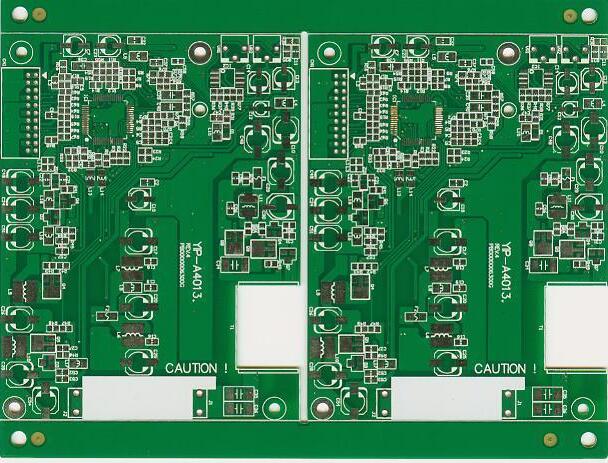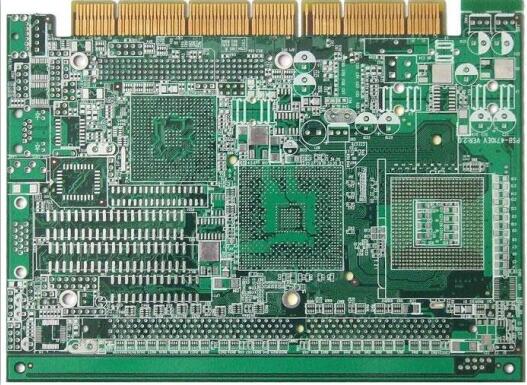PCB board impedance introduction
PCB board impedance refers to the PCB board that needs impedance control. Impedance control means that under a high-frequency signal, the "resistance" of a certaincircuit layer to its reference layer during transmission must be controlled within the rated range to ensure that the signal is not distorted during transmission. Impedance control is actually to make every part of the system have the same impedance value, that is, impedance matching.

The key factors affecting impedance:
W-----line width/line-to-line the line width increases, the impedance decreases, and the distance increases the impedance increases;
H----Insulation thickness The thickness increases and the impedance increases;
T------copper thickness copper thickness increases and impedance decreases;
H1---green oil thick the thickness increases and the impedance decreases;
Er-----dielectric constant reference layer DK value increases, impedance decreases;
Undercut----W1-W undercut increases, and the impedance becomes larger.
In fact, solder mask also has an impact on impedance, but because the solder mask is attached to the dielectric, the dielectric constant increases. This is attributed to the influence of the dielectric constant, and the impedance value will be reduced by approximately 4%.
What is the material of the PCB board
The main material of printed circuit boards is copper clad laminate, and copper clad laminate (copper clad laminate) is composed of substrate, copper foil and adhesive. The substrate is an insulating layer board composed of polymer synthetic resin and reinforcing materials; the surface of the substrate is covered with a pure copper foil with high conductivity and good solderability.

The usual thickness is 35~50/ma; the copper clad laminate with copper foil covering one side of the substrate is called single-sided copper clad laminate, and the copper clad laminate with copper foil on both sides of the substrate is called double-sided copper clad laminate; whether the copper foil can be firmly covered on the substrate, It is completed by the adhesive. The thickness of commonly used copper clad laminates are 1.0mm, 1.5mm and 2.0mm.
What are the types of copper clad laminates
There are also many types of copper clad laminates. According to different insulating materials, it can be divided into paper substrate, glass cloth substrate and synthetic fiberboard; according to different binder resins, it can be divided into phenolic, epoxy, polyester and polytetrafluoroethylene; it can be divided into general and special types according to the purpose. .
Types of copper clad laminates
(1) Copper clad phenolic paper laminate
It is a laminate made of insulating impregnated paper (TFz-62) or cotton fiber impregnated paper (1TZ-63) impregnated with phenolic resin and then hot pressed. The adhesive tape on both surfaces can be attached with a single sheet of alkali-free glass impregnated cloth. Cover one side with copper foil. Mainly used as a printed circuit board in radio equipment.
(2) Copper clad phenolic glass cloth laminate
is a laminate made of alkali-free glass cloth impregnated with epoxy phenolic resin and hot pressed. One or both sides are coated with copper foil, which has the advantages of light weight, good electrical and mechanical properties, and convenient processing. The surface of the board is light yellow, if melamine is used as the curing agent, the surface of the board is light green and has good transparency. Mainly used as a printed circuit board in radio equipment with higher operating temperature and operating frequency.
(3) Copper clad PTFE laminate
is a kind of copper-clad board made of PTFE board as the base plate, coated with copper foil and hot-pressed. Mainly used for printed boards in high frequency and ultra high frequency circuits.
(4) Copper clad epoxy glass cloth laminate
is a commonly used material for hole metallized printed boards.
(5) Flexible polyester copper-clad film
is a ribbon-shaped material made of polyester film and copper by hot pressing. In the application, it is crimped into a spiral shape and placed inside the device. In order to reinforce or prevent moisture, it is often poured into a whole with epoxy resin. Mainly used as flexible printed circuit and printed cable, and can be used as a transition line for connectors. At present, the copper clad laminates available on the market, considering the base material, can be divided into the following categories: paper substrates, glass fiber cloth substrates, synthetic fiber cloth substrates, non-woven fabric substrates, and composite substrates.